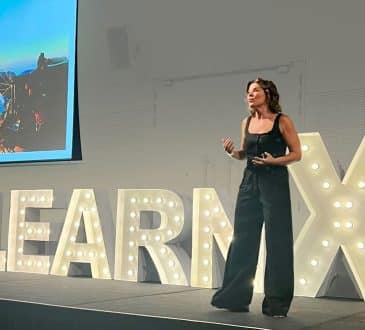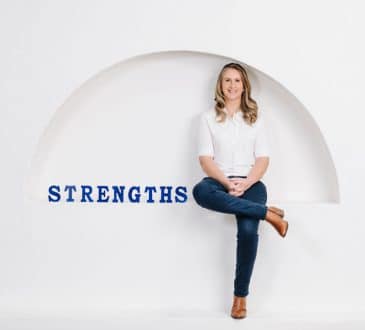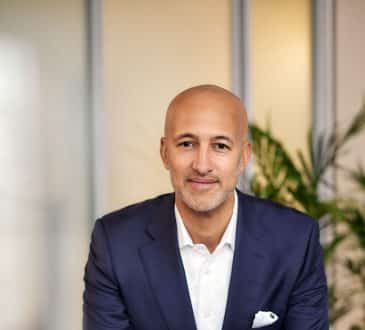Want to Make Better Decisions? Speed Them Up!

We all like to make good decisions. We want our boss to see that we exercise sound judgment. We want to appear to be astute and rational in order to win the confidence of our people. And, naturally, we want to produce the right outcomes.
Decision-making is one of the most critical skills a leader can posses, and it’s at the very heart of competitive strategy. When we strip away all the noise, the companies that outperform their peers simply make better decisions, faster. That’s why leadership excellence is underpinned by the capability to make great decisions.
So, what does a great decision look like, and what disciplines do we need to put in place to become better decision-makers?
WHAT MAKES A GREAT DECISION?
You never know for sure whether you’ve made a good decision until you see the outcome—that’s the ultimate test. But there are lead indicators that will tell you whether a decision you’re about to make is likely to be a good one.
Through decades of senior leadership in highly competitive markets, I’ve gleaned eight fundamental characteristics—the essential DNA—of great decisions. If you can check these boxes in your decision-making process, you’re much more likely to make a great decision than a poor one:
- Great decisions are timely
Although speed is a critical feature of great decisions, it’s often seen as a nice-to-have. Subordinating speed to other criteria undervalues the importance of its role in decision-making. More on this shortly. - Great decisions are made by a clearly accountable person
Too often, we see a company fall into the trap of decision-making by consensus. Consensus is a sign of unanimous approval, which is why weak leaders find it so comforting. They feel better about making a decision when everyone nods their head in agreement.
But this is a critical failure point for decision-making. Seeking consensus requires compromise in order to incorporate everyone’s views. This rarely results in a great decision—more often, it just produces an inferior decision that everyone can live with. And worse, it can slow the decision-making process to glacial speed while compromises are sought.
Having a single individual who’s accountable for making a decision, and giving that person the freedom to make it, even in the face of minority dissent is critical to both the speed and efficacy of any decision. - Great decisions are made as close as possible to the action
Many leaders, when faced with the weight of decision-making accountability, try to push that accountability upwards by seeking approval and agreement from their boss. In this way, there’s a level of comfort that, if everything goes to custard, at least they didn’t make the decision on their own. Pushing decision-making accountability down to the lowest practicable level will ensure that the leaders at each organizational layer make decisions appropriate to their role and job function. - Great decisions are shaped by consideration of many different viewpoints
Although the general rule of thumb is that accountability should trump collaboration, this doesn’t give decision-makers the right to act unilaterally. For a decision to be properly formed, consultation and diverse opinion should be sought from those who can contribute in a meaningful way.
This doesn’t mean that every person with a pulse rate should be asked for their opinion. The right people with the relevant expertise need to clearly articulate their views to help the accountable decision-maker broaden their perspective. This is what makes for good judgment calls. It’s also the source of the healthy, robust debate that leads to greater understanding and better outcomes. - Great decisions consider the holistic impacts of a problem
When faced with a major decision, there will always be a balance of risks, impacts, and flow-on effects. Ensuring that consideration is given to a broad range of factors is valuable. For example, a decision relating to the maintenance of a critical manufacturing facility might require you to consider financial, regulatory, safety, customer, and supply chain factors. - Great decisions balance short-term and long-term value
Short-termism is a curse that plagues many leaders’ decision-making frames. Corporate incentives are designed to reward short-term performance, so it requires significant strength and courage to consistently operate in the long-term interests of your company. Finding the right balance between short-term and long-term considerations is key to unlocking true value. - Great decisions address the root cause, not just the symptoms
Often, when faced with a difficult problem, we tend to focus on resolving the symptoms, without addressing the core issue that caused the problem in the first place. If you do this, the same problem is sure to rear its ugly head at a future point. The process of triage may require you to address the symptoms first. But once this is done, there should always be a plan to get to the root cause and resolve it. - Great decisions are communicated well to stakeholders
You don’t want everyone with a passing interest to contribute to the process, but you do want everyone aligned to the outcomes, particularly if they have a part to play in execution. That’s why communicating the substance of a decision can be incredibly valuable.
You’re not seeking approval or consensus for your decision: rather, you’re looking to bring everyone up to a consistent level of understanding. This will be invaluable when it comes to implementing a major decision.
WHY IS SPEED SO IMPORTANT?
We hear the word agile used liberally these days, but the biggest threat to agility is a slow decision-making tempo.
Throughout my corporate career, I had the opportunity to lead people through a number of significant events and crises. In a crisis, you don’t get to control the tempo of your decisions—the timing is dictated by, for example, the media, an overzealous regulator, or a critical asset failure. What I learned from this was that the decisions I made under extreme time pressure were at least as good as the decisions I made when I had the luxury of an open-ended timeframe.
So I decided to deconstruct what I as doing during those times of crisis, and ask myself an important question: If I can make great decisions quickly in times of crisis, what would I need to do in order to replicate that tempo consistently?
The eight ingredients of great decisions can be executed much faster than you think. What this takes is a commitment to action, and a discipline to track the elements of the decision to ensure they all keep moving forward at pace.
Most delays in our decisions are the result of our innate human frailty: we seek greater certainty, we look for approval, and we fear the possibility of making a mistake. This slows us down way more than any genuine need to wait for additional inputs, in the hope that they’ll improve the efficacy of our decision.
Consultation doesn’t have to be lengthy, it just has to elicit the right viewpoints so that they’re accurately represented and considered in the decision-making process. When it comes to consultation, the point of diminishing returns is reached much sooner than you might think.
In most cases, we don’t need more data—we already have sufficient data. To make matters worse, we tend to ascribe too high a level of certainty to the data points we do have. Data is generally flawed, and acquiring more data rarely makes a material difference to our ultimate decision. Yet we wait, sometimes for way too long, in the hope that a flash of inspiration will leap from the page in front of us.
TAKING THE FIRST STEPS
Improving your own decision-making capability—and creating a culture where your decisions create organizational momentum—begins with your willingness to speed things up. Your goal should be to create the culture of excellence over perfection. Your people have to be confident that they’re able move quickly, and to see that your focus is on making good decisions quickly, not agonizing over every little detail in the hope that you don’t make a mistake.
You can break the safety in numbers mentality by making people individually accountable for their decisions, and by emphasizing at every opportunity that consensus is not the ideal outcome. Rather, build a culture where robust challenge is not just accepted, but expected.
With a few simple changes, you’ll begin to see how making better decisions, faster, can lift your team to new levels of performance.
Written by Martin G. Moore.
Add CEOWORLD magazine to your Google News feed.
Follow CEOWORLD magazine headlines on: Google News, LinkedIn, Twitter, and Facebook.
This report/news/ranking/statistics has been prepared only for general guidance on matters of interest and does not constitute professional advice. You should not act upon the information contained in this publication without obtaining specific professional advice. No representation or warranty (express or implied) is given as to the accuracy or completeness of the information contained in this publication, and, to the extent permitted by law, CEOWORLD magazine does not accept or assume any liability, responsibility or duty of care for any consequences of you or anyone else acting, or refraining to act, in reliance on the information contained in this publication or for any decision based on it.
Copyright 2024 The CEOWORLD magazine. All rights reserved. This material (and any extract from it) must not be copied, redistributed or placed on any website, without CEOWORLD magazine' prior written consent. For media queries, please contact: info@ceoworld.biz
SUBSCRIBE NEWSLETTER








